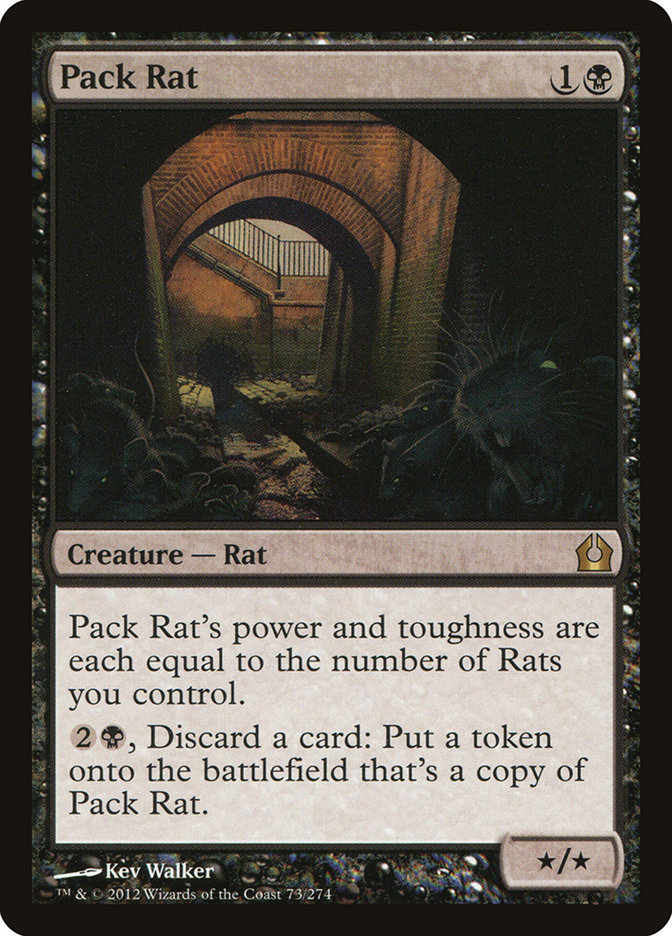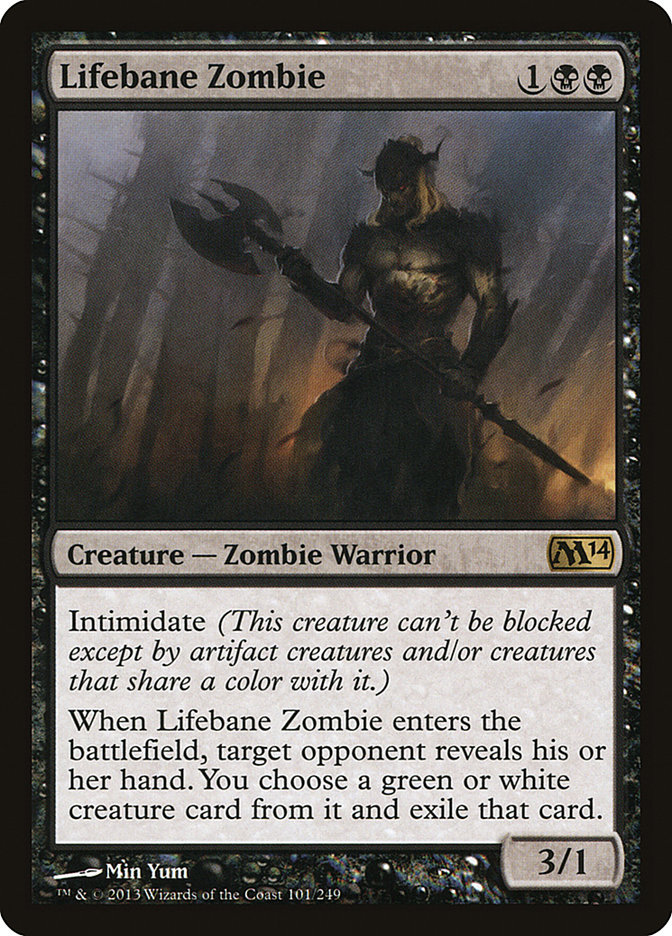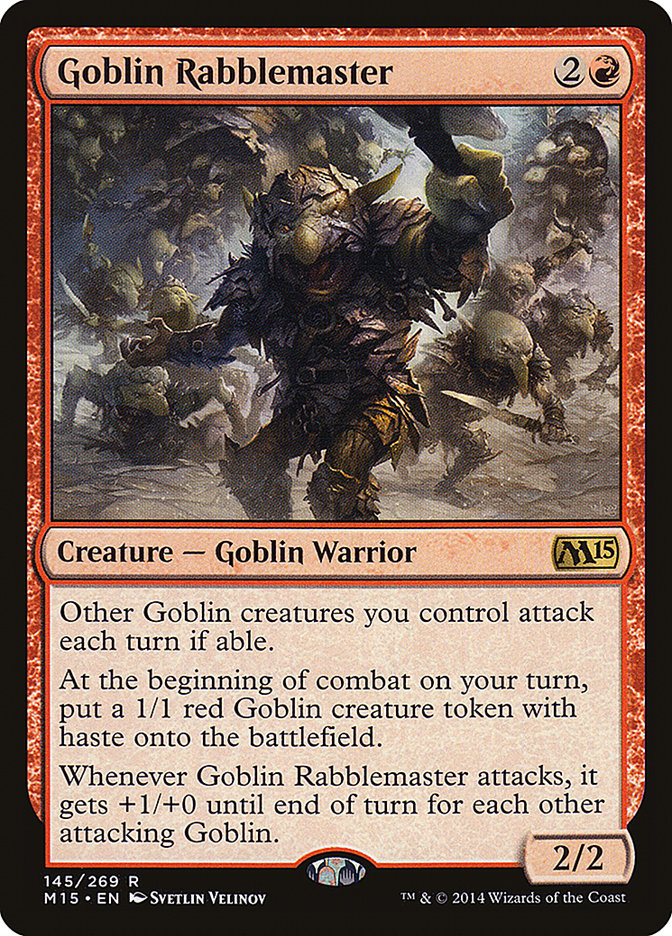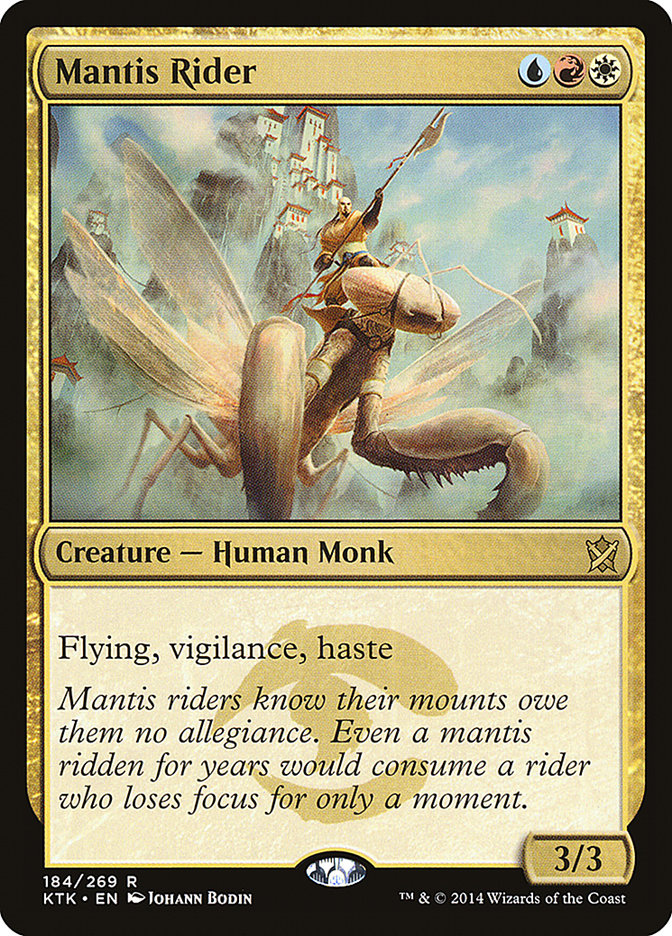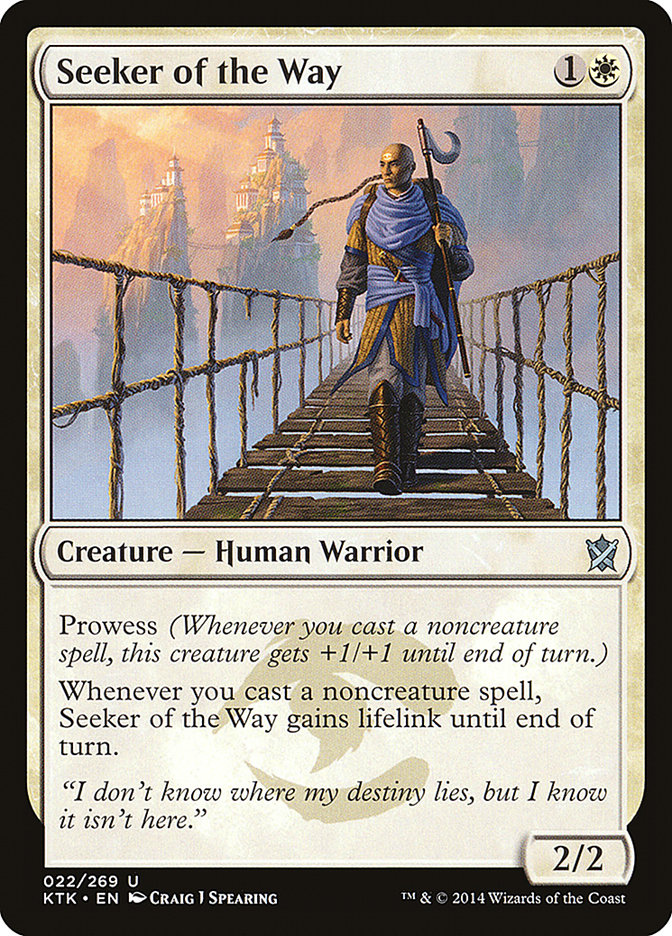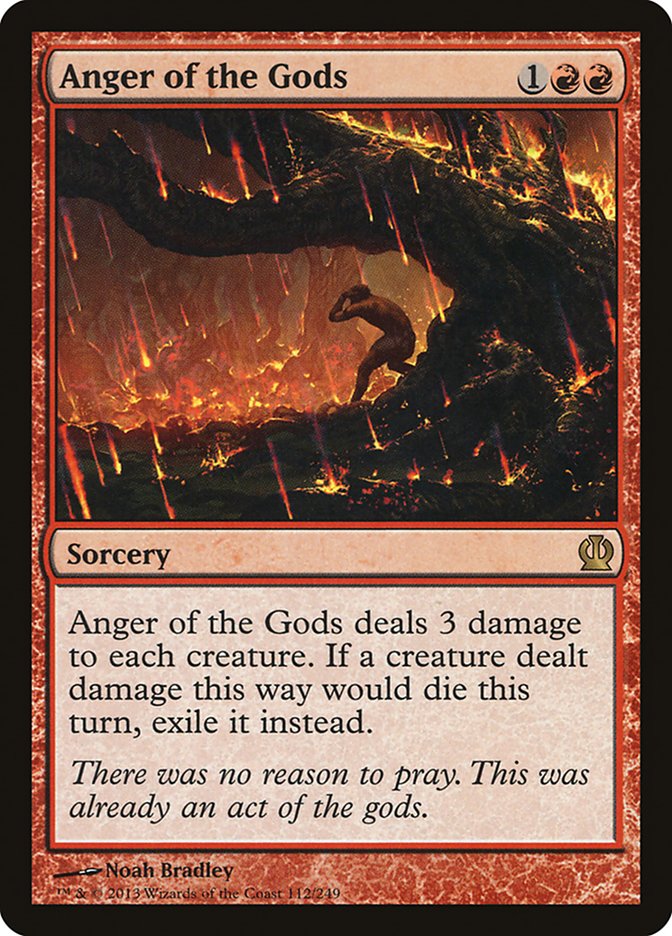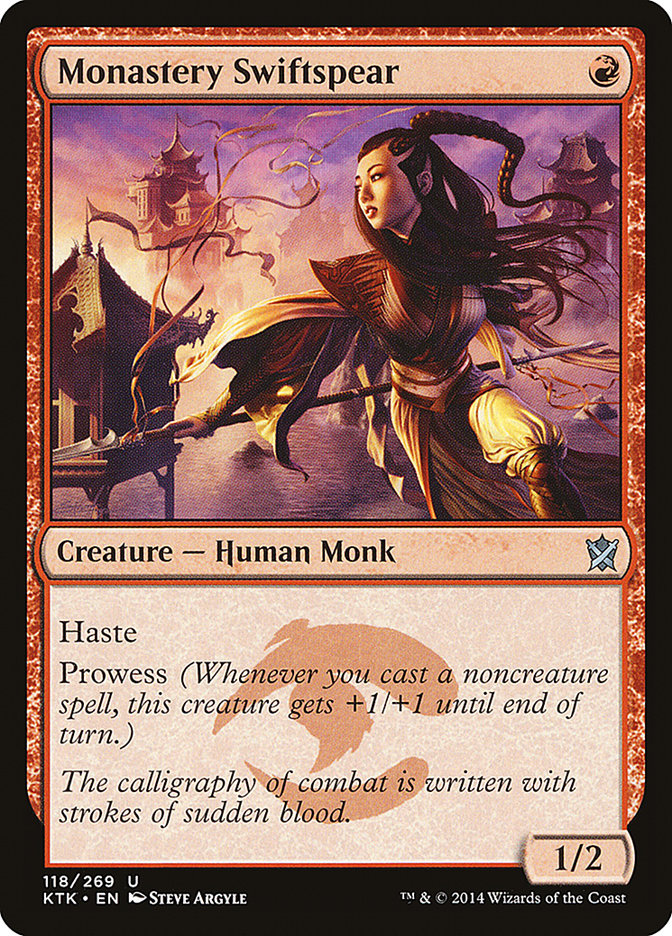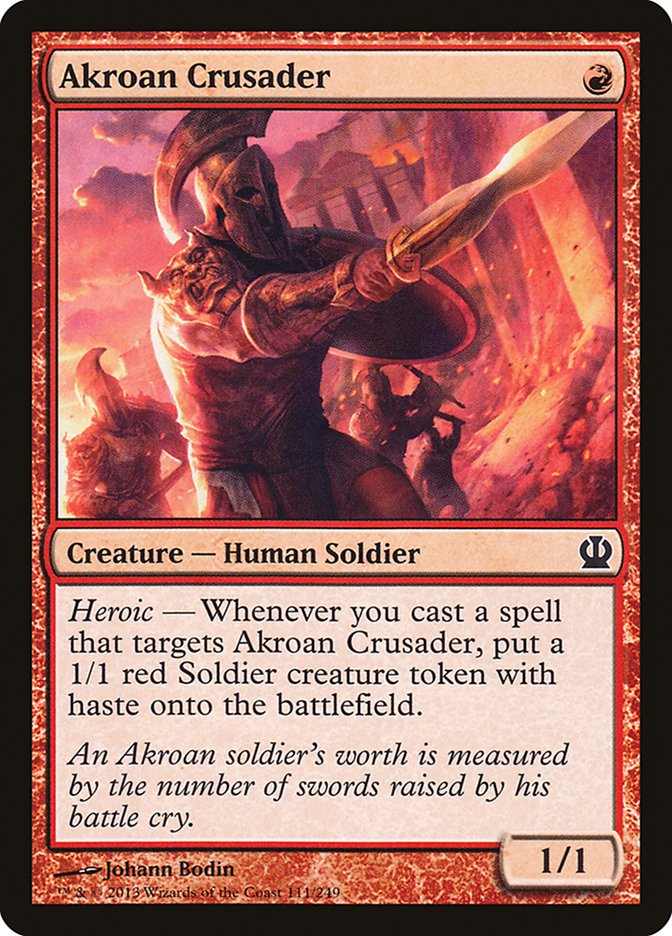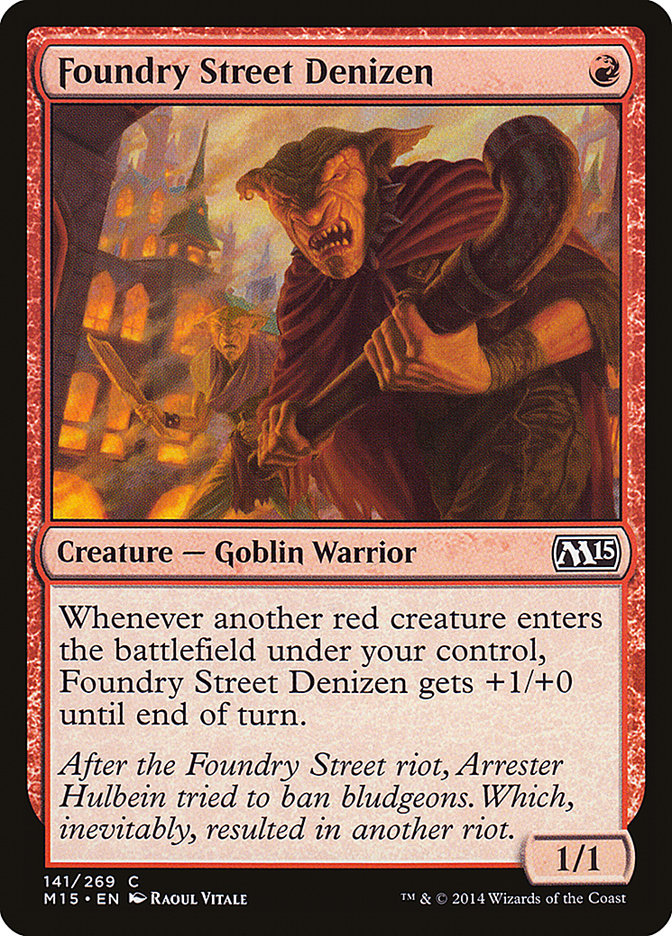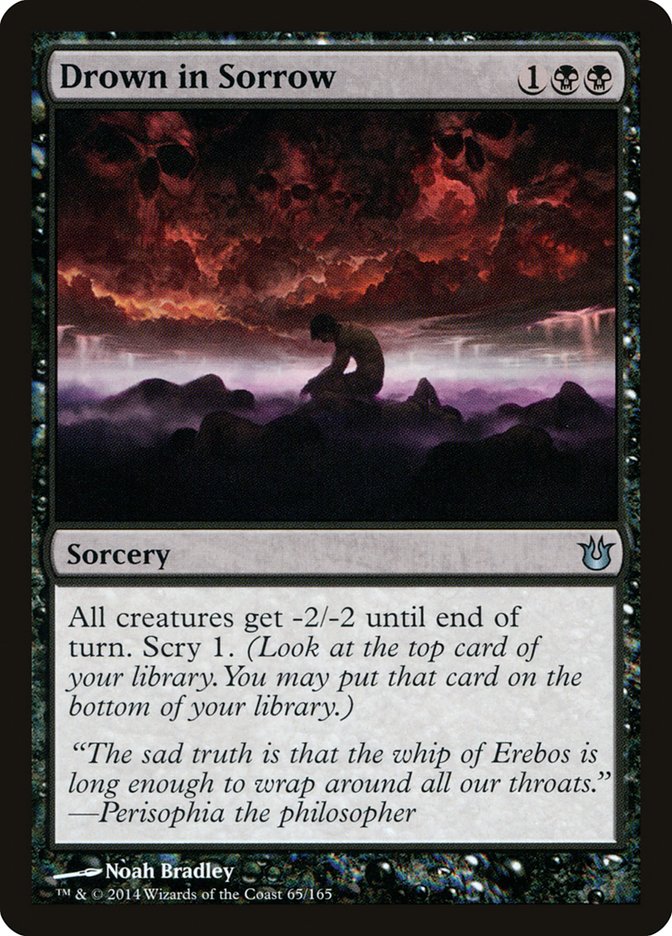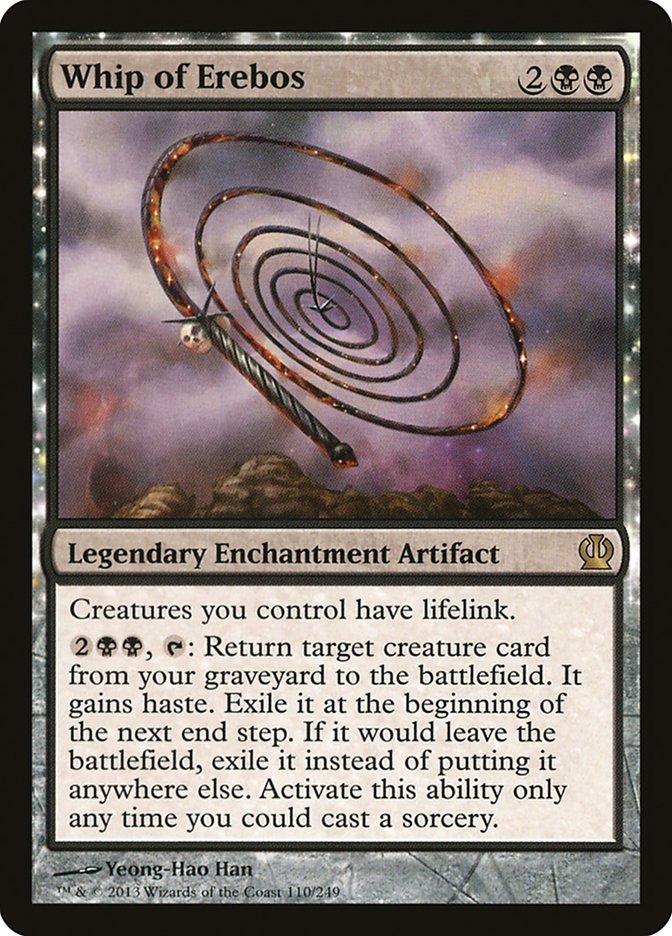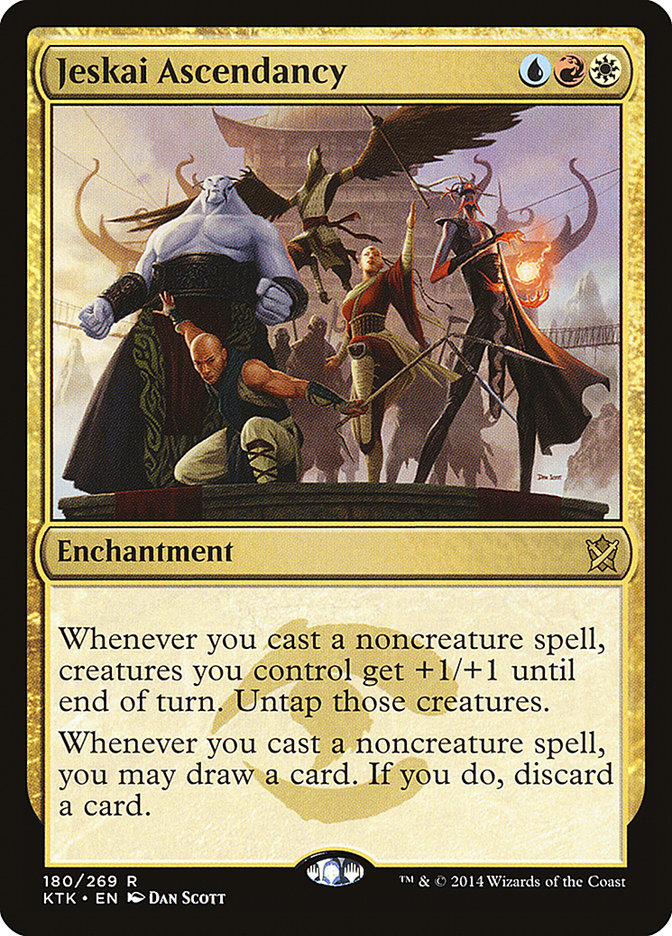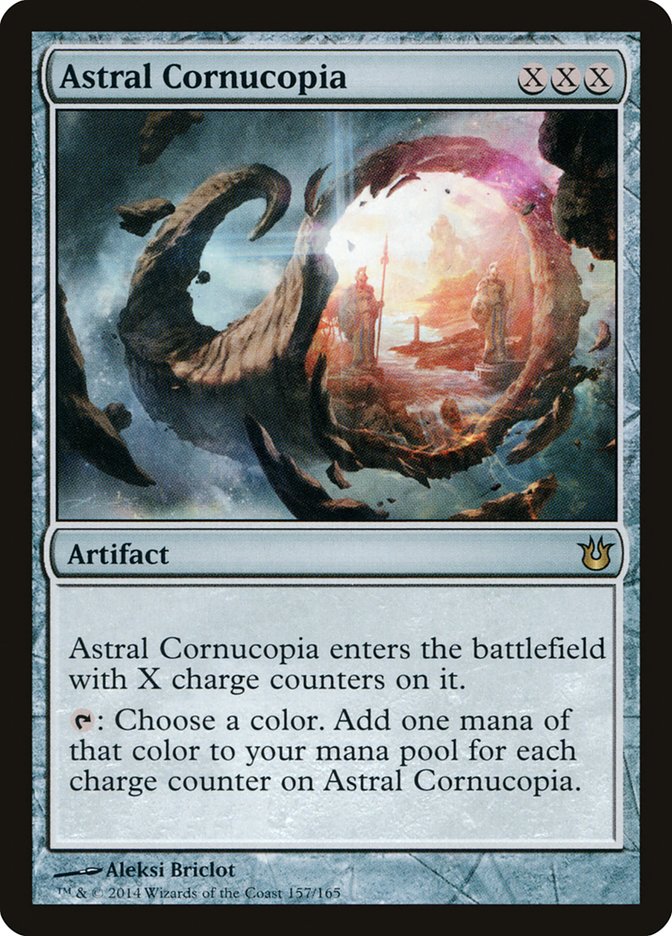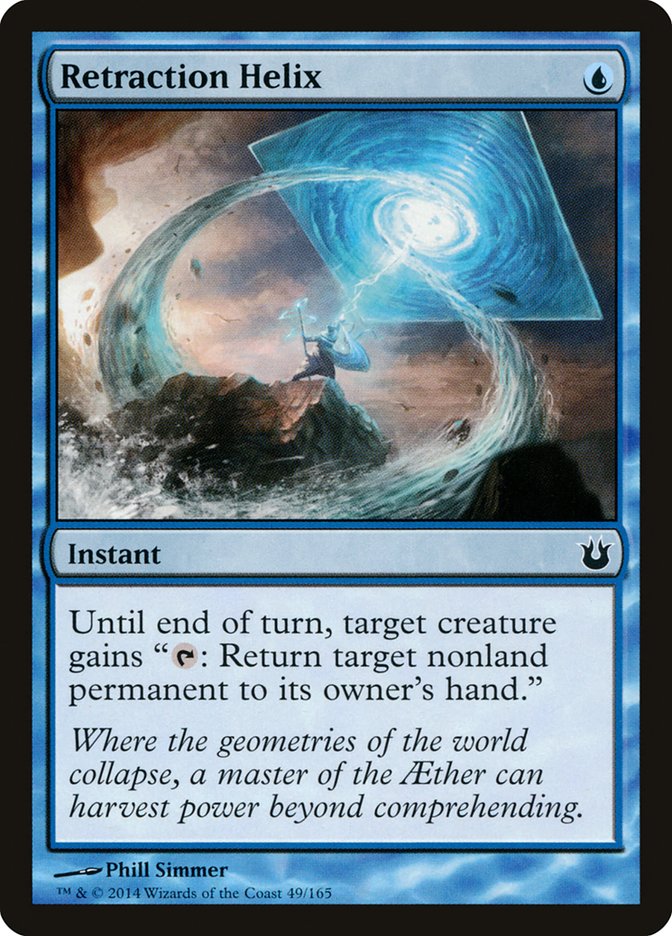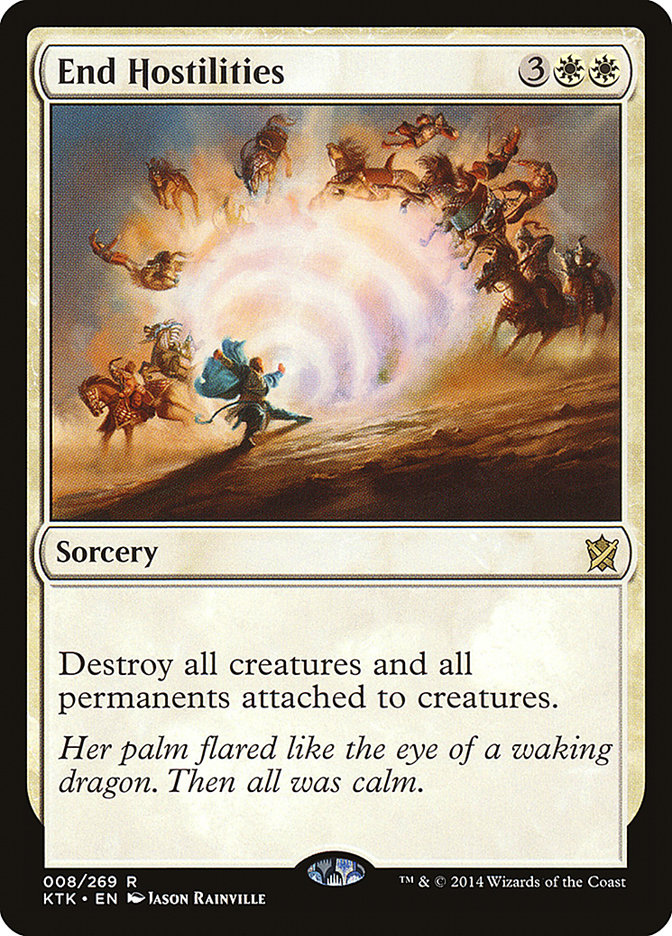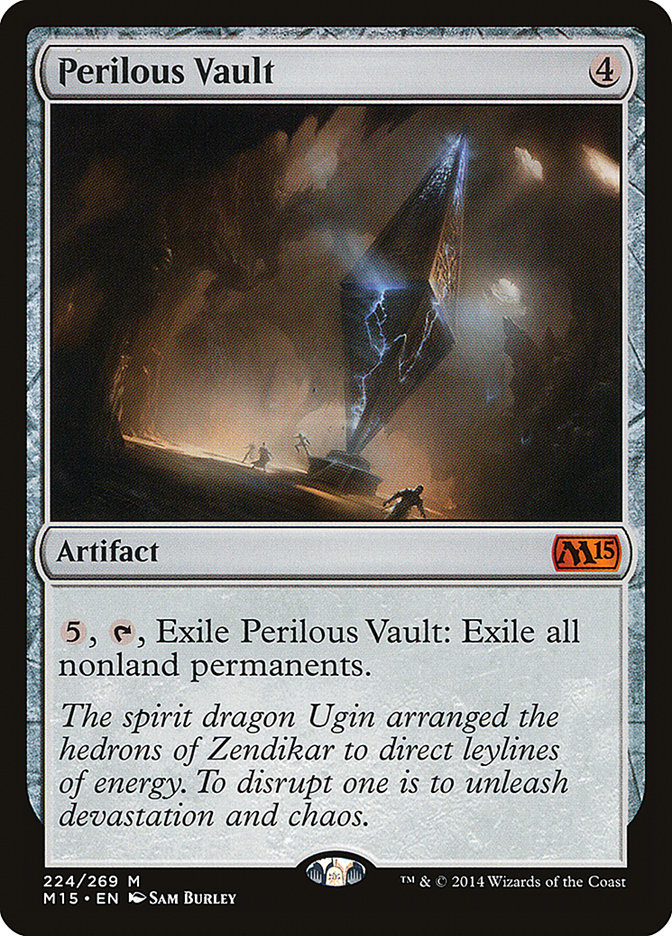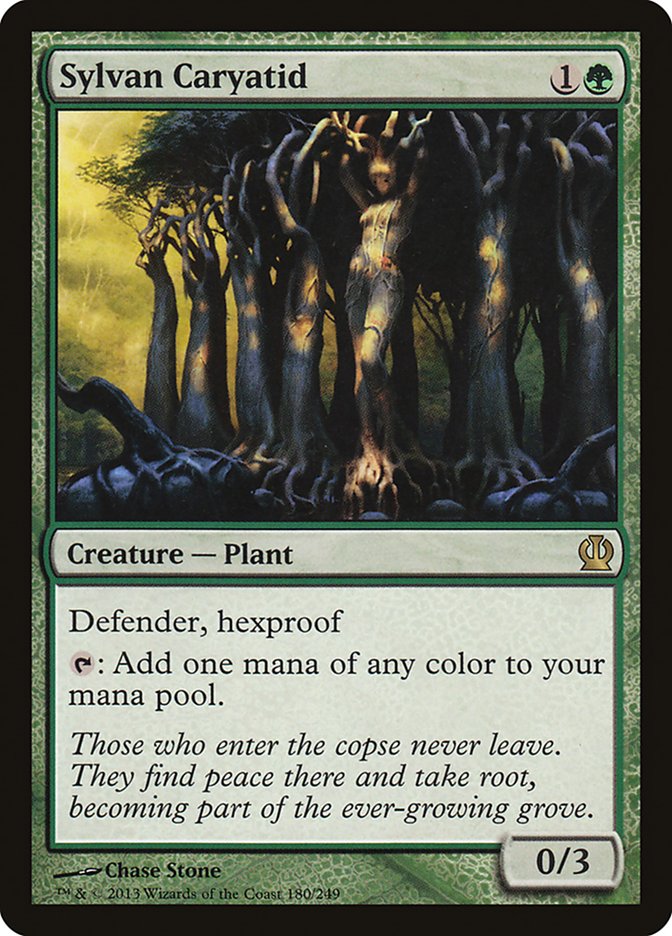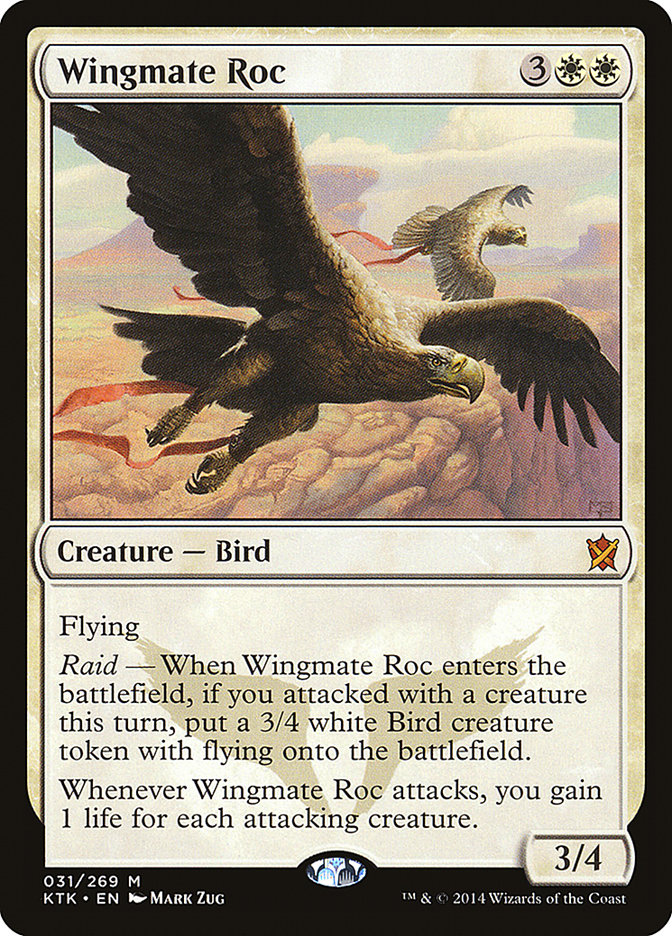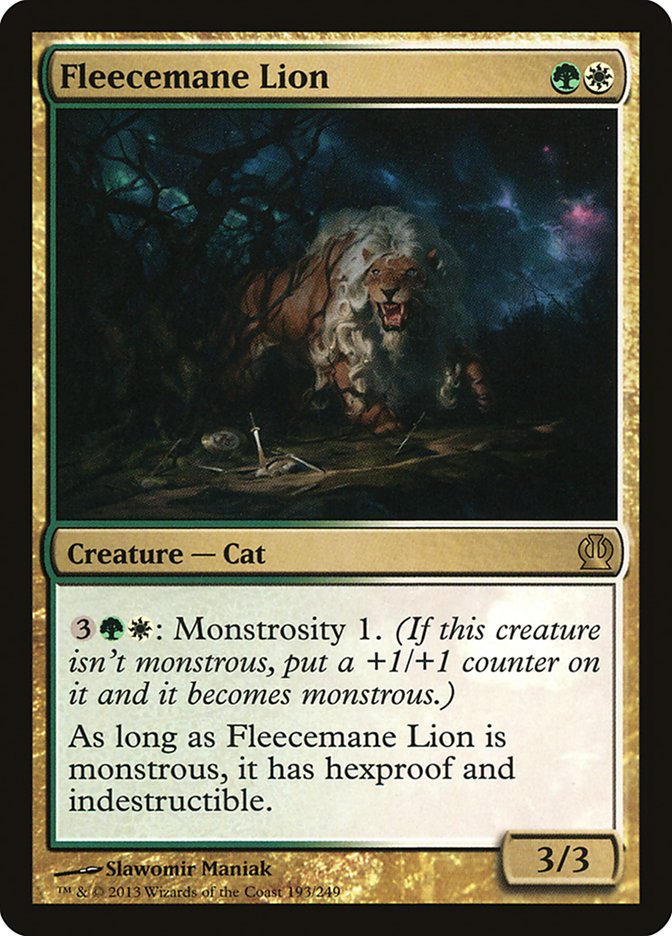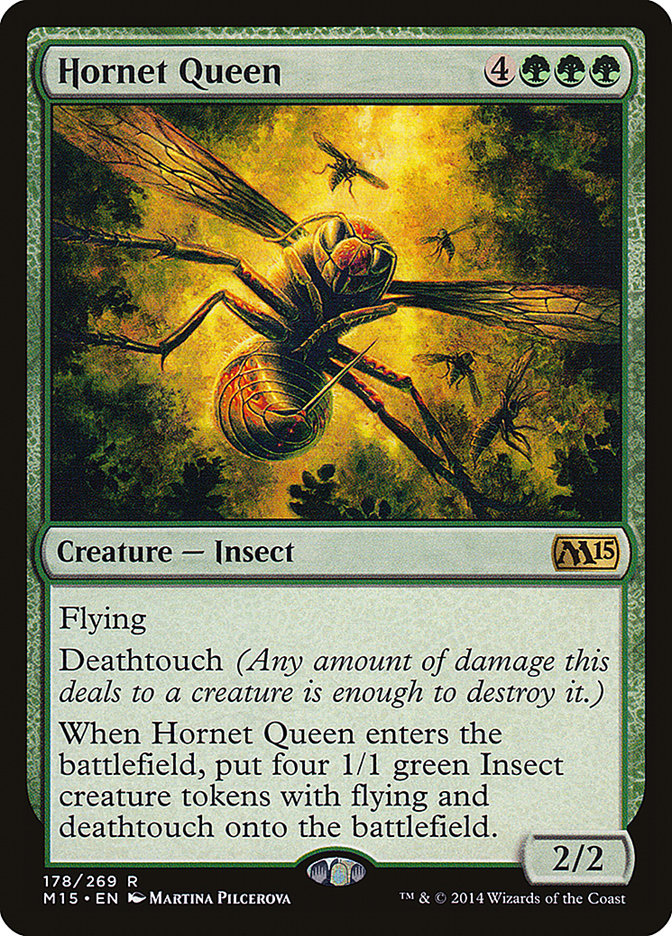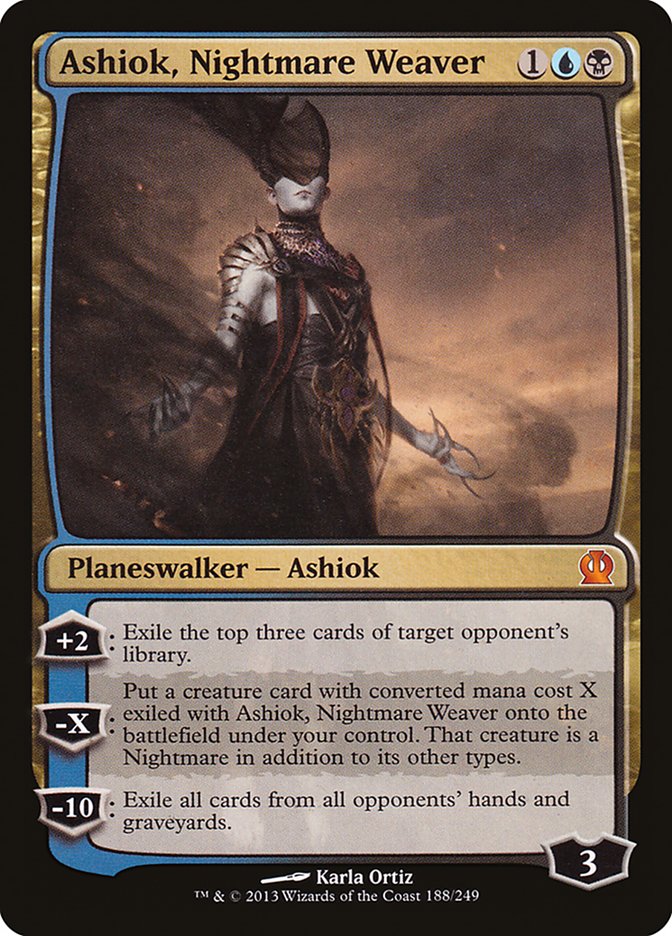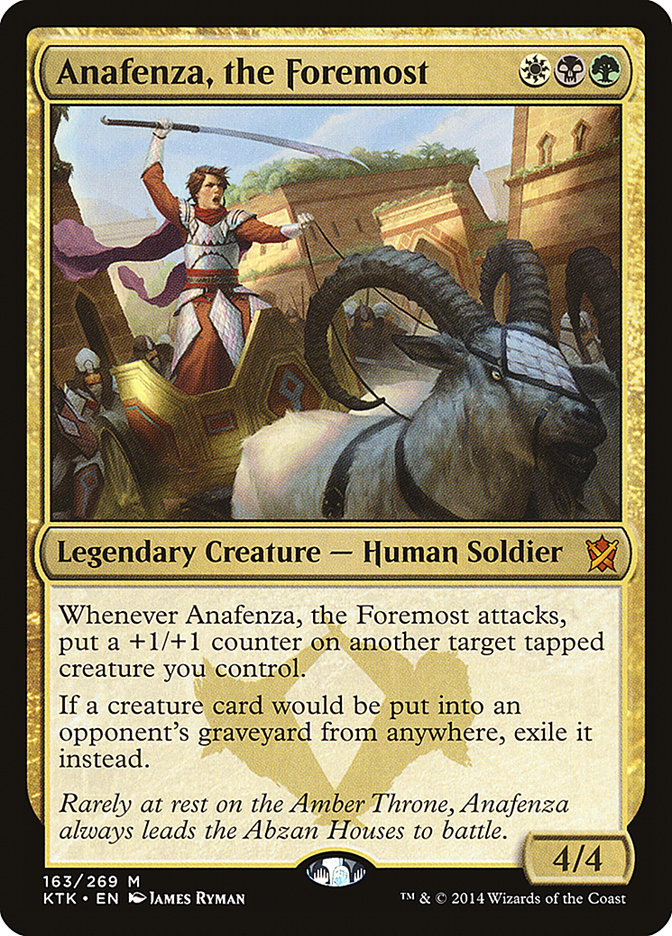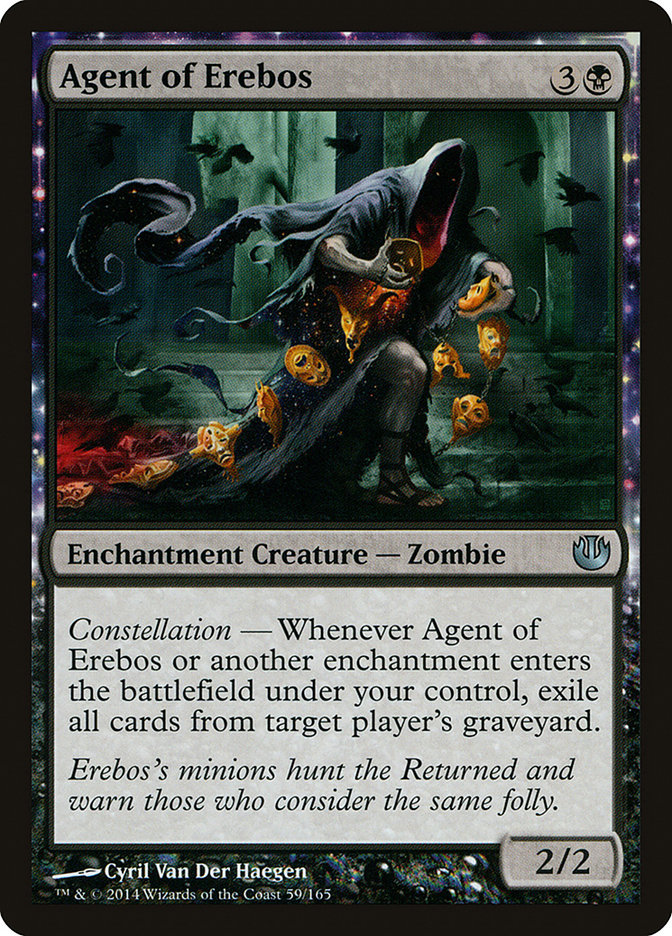The new Standard format with Khans of Tarkir is here and in full swing all around the world. So far, I’ve found the format to be dynamic, exciting, and
challenging to play and couldn’t be happier with how the format is shaping up so far. The last Standard season was one of the better Standard formats that
I’ve had the chance to play, and with format warping staples like Sphinx’s Revelation, Mutavault, Pack Rat, and Lifebane Zombie hitting the road and moving
on into Modern, my expectation for this new Standard remains very high.
My assumption is that for the most part the previous Standard format was extremely diverse and that there were a lot of different viable decks for players
to choose from: Mono-Black Devotion, Mono-Blue Devotion, Rabble Red, U/W Control, G/W Aggro, Jund Monsters, Jund Planeswalkers, B/W Midrange, Naya
Hexproof, and R/W Burn were all decks that people could play and feel good about playing.
The problem were the few cards I mentioned above:
Good riddance, to the fun police.
These unfortunate cards took a format that appeared to be wide open to deck builders and really put some significant constraints upon what one could
actually be considered tier one.
Thoughtseize + Pack Rat really put the pressure on an opponent to produce a removal spell or risk being run over from the start, and creatureless Supreme
Verdict + Sphinx’s Revelation decks really punished people for playing creature removal spells in their deck. So, despite a format full of great cards and
lots of different options, unless you were playing a deck with a ton of threats, chances are that you were probably not looking great overall against both
of these “best decks.”
Also, I hope your deck wasn’t green and white creatures, because:
“Mmm, good guys…”
The great news is that all of these previously oppressive metagame Magic cards have rotated out of Standard and that the new crop of cards from
Theros Block, M15, and Khans of Tarkir don’t appear to have clear replacement dominant cards or decks. At least, if these types of cards and decks exist
they are not apparent to me or the rest of the world, yet.
I have been playing a ton of Standard lately in local tournaments, and in today’s article I am going to share my take on what the metagame looks like to me
so far and how to stay on top of what is going on.
The Aggro Decks
Khans of Tarkir Standard has quite a few nice aggressive beatdown decks that have emerged and risen to the ranks of the top decks in the format. Most of
these decks are red and feature Goblin Rabblemaster as a great way to leverage board presence against a floundering opponent.
What is Jeskai Tempo?
Well, for starters this archetype won the Standard Open in New Jersey during the first week of tournament legality for new Khans of Tarkir Standard.
I think that everybody who predicted that Goblin Rabblemaster would be one of the pillars of the format was pretty spot on.
The red Bitterblossom.
Goblin Rabblemaster is a powerful Magic card, and it is pretty amazing that playing two copies of this card on the play is a near death sentence against
most other decks in the format. Of all the Rabblemaster decks I have played with or against so far, Jeskai Tempo appears to be the most potent version:
Creatures (11)
Planeswalkers (3)
Lands (24)
Spells (22)

From what I’ve seen playing in local events and doing a ton of playtesting with people at my local game stores, it appears to me that Jeskai Tempo is a
clear frontrunner for “most popular deck” at this early stage of the format. A lot of people seem to have picked up this deck and run with it, which isn’t
surprising because it is the type of deck that has historically proven to be good. It’s aggressive, full of threats, and can burn an opponent out from a
high life total via its impressive arsenal of burn spells.
The true gem of this deck has to be:
How to train your mantis.
One of the things that I’ve really noticed about this deck is that when it is on the play with a Mantis Rider, it puts a ton of pressure on the opponent to
have an answer for the powerful flier. In most cases, players cannot afford to get hit by this flier more than one or two times or risk falling down into
the range of simply getting burned out.
And don’t even get me started on how good the double Mantis Rider on the play start is…
Rider is great because it matches up favorably against most of the cards that would traditionally trade up with a three-drop creature. Drown in Sorrow and
Last Breath are useless against this creature, as is trying to fight it on the ground with blocks by Fleecemane Lion or Courser of Kruphix. It’s also
pretty significant that Elspeth, Sun’s Champion can’t come over the top and do much of anything about Mantis Rider coming in for another dose of damage.
The key to this deck is that its creatures are all quite fast at getting into the red zone and quickly putting a slower opponent into burn range.
No racing and no blocking with Sylvan Caryatid.
One of the things I would change about Kevin’s tournament winning deck list is that I would move up to four copies of Seeker of the Way in the maindeck.
The card fills several important roles in the deck and gives the deck a better curve out, nut draw.
Essentially, Seeker of the Way executes two important functions in this deck. The first is that it is a two drop attacker that, like Fleecemane Lion, can
actually attack through an opponent’s defensive Sylvan Caryatids. If you have a Seeker of the Way and they play a Caryatid, one has to figure that if you
untap with mana up and swing in with the Seeker that they cannot risk a block because you can just sling a burn spell at their face to pump the Seeker and
kill their mana dork.
The other important function of this card is that it makes it very problematic for other aggressive decks to actually race against Jeskai Tempo. A Seeker
of the Way or two can simply gain you enough life that an opponent’s attacks won’t add up to lethal fast enough to stay alive through Jeskai’s attacks and
burn spells.
What is Jeskai Tempo Good Against?
Jeskai Tempo is basically just a good aggro deck and probably the format defining list at the moment. It is probably going to beat most players who keep a
slow or clunky hand and is great at punishing people who are on the draw. Like all aggressive tempo decks the Standard Jeskai deck is good against anybody
who doesn’t have cards that interact with Jeskai’s spells from turn 2 forward. If an opponent falls behind they may never have the chance to catch up
because the tempo deck may well just be sitting on a hand full of lethal burn while a floundering opponent struggles to deal with the board.
What is Good Against Jeskai Tempo?
Decks with lifegain and removal are going to be the best predators of the Jeskai Tempo decks. If a player can answer Jeskai’s threats on time and then gain
some life, it is fairly easy to stay out of burn range.
I’m going to hire a Rhino to redecorate our home.
Siege Rhino is a card that I’ve found to be a real Achilles’ heel for Jeskai Tempo, as it races hard and there are very few ways for the Jeskai deck to
trade profitably with it. Not only that, but it actually races (thanks to the three point life swing ETB trigger) and can hold down the ground the turn it
comes into play. Two Rhinos is usually a death sentence, if they come down on turns 3 and 4.
In particular, I think that the Abzan Midrange deck tends to match up really well against Jeskai Tempo simply because the deck is primarily composed of
spells that do the two things that Jeskai hates: kill creatures and gain life.
It is cute that Jeskai Tempo has Mantis Rider which at least makes boarding in Drown in Sorrow a risky (but probably necessary maneuver) since it is
possible to simply draw Mantis Rider and blank the powerful mini-sweeper.
On the other hand, this card is quite good against Jeskai:
“Burn them all down!”
A three mana sweeper that also kills Mantis Rider along with everything else, on the other hand, is a pretty big game against Jeskai Tempo. I really like
the ability of many decks to use this powerful tool as a sideboard option against Jeskai. In fact, it looks like Anger of the Gods is one of the all around
best sideboard cards in the format, as it kills most aggressive threats that come down on turns 1, 2, and 3. The exceptions, of course, are Courser of
Kruphix, Master of the Feast, Nemesis of Mortals, and Ashiok, Nightmare Weaver
What is Rabble Red?
So, this Goblin Rabblemaster card is pretty good and will likely be making an appearance in any deck that is aggressive and plays the color red, or in this
case plays ONLY the color red.
Creatures (20)
- 4 Foundry Street Denizen
- 4 Akroan Crusader
- 4 Firedrinker Satyr
- 4 Goblin Rabblemaster
- 4 Monastery Swiftspear
Lands (19)
Spells (21)

Mono Red Aggro is basically the good mono-colored beatdown deck in the format. The advantage of a deck like this is that it gets to consistently start
casting spells on the very first turn of the game:
“What costs one and is coming to get you while you fumble around with Temples?”
Mono-Red Aggro gives up card quality in order to gain a flawless, comes into play untapped, manabase and the pure speed of actually curving out and using
all six of its mana on the first three turns of the game. The key is that if you’ve made six mana worth of plays in the first three turns and your opponent
can’t make the same kind of impact plays early on in the game, they will fall behind on the board and die.
While a deck like this may be speedy, it also suffers from some of the problems that Jeskai Tempo also suffers from. If an opponent is doing stuff that
matters and can match up against your smaller creatures, things can go downhill in a hurry. The good news is that Rabble Red has some cards that are good
at squeaking through past blockers, such as Hammerhand, and can even sideboard Act of Treason effects to steal potential blockers and use them against
their owners.
What is Rabble Red Good Against?
Besides people who are on the draw?
Mono-Red Aggro is good against people with slower decks that need some time and room to set up and execute their gameplan. Unfortunately, most of the decks
in the format don’t simply give up the first few turns and actually have relevant plays to be making. For instance, most green decks have at least Sylvan
Caryatid.
The good thing for red mages is that these builds of fast red aggro are very good at hitting a critical mass around turn 4 where unless an opponent has
done a couple of things to interact there is a good chance that they will be falling into burn range and behind on the board. It is also nice that decks
that are relying heavily on removal spells to create parity and trade with an opponent will be hard pressed to find targets as good (or as expensive) as
the removal spells themselves.
Casting Hero’s Downfall to kill a Monastery Swiftspear that has already dealt three damage is not a very enticing “trade.”
What is Good Against Rabble Red?
The key to beating Mono-Red Aggro is to not fall behind and play cards that can efficiently stem the bleeding until your bigger and better cards can show
up and outclass their creatures in the red zone.
Three mana sweepers are the pinnacle of goodness against Mono-Red.
Casting one of these spells can go a long way toward completely undoing everything that a red mage has been working for in those critical first three
turns, which will usually eliminate their board presence while simultaneously generating card advantage.
Lifegain (as was the case against Jeskai Tempo) is also at a big time premium against mono-red. Since all the deck is programmed to do is to deal twenty
damage as fast as possible, any amount of lifegain will tend to make it difficult for a red deck to find a way to deal those critical last points of
damage.
Take back what is yours.
Both of these cards are great against all-in aggro decks and are among the spells that I want to see cast the least when I’m playing from the red side.
Combo/Ramp Decks
Standard also has the possibility for a few nice linear combo / ramp decks to continue to perform well as we move forward into the Pro Tour.
In particular, this card:
Draw cards and untap permanents, I wonder if this is abusable…?
What is Jeskai Ascendancy?
Jeskai Ascendancy has already made its presence known in Modern as well as Standard.
Creatures (12)
Lands (21)
Spells (27)
- 4 Commune with the Gods
- 4 Dragon Mantle
- 1 Nylea's Presence
- 1 Astral Cornucopia
- 4 Retraction Helix
- 3 Twinflame
- 1 Briber's Purse
- 2 Taigam's Scheming
- 3 Dig Through Time
- 4 Jeskai Ascendancy
Sideboard

Basically, the joke with this deck is that if you have two active mana generating creatures in play and a Jeskai Ascension, every single one mana cantrip
you play will gain the ability +1 mana, + draw one card and discard while each of your creatures get +1/+1.
Obviously, the end game here is that you can basically draw your entire deck and make a ton of mana by abusing this interaction.
These three = infinite mana and infinite +1/+1.
You give a creature the Retraction Helix ability and then tap that creature to bounce an Astral Cornucopia with XXX = 0, replay the Astral Cornucopia with
XXX = 0, rinse, repeat.
The deck is cool because if your opponent cannot interact with your combo they may very well just die. The problem is that the combo is kind of fragile. If
your opponent can kill your mana accelerants or remove an Ascendancy at instant speed, you’re going to be in a world of pain.
What is Jeskai Ascendancy Good Against?
Jeskai Ascendancy combo is great against people who cannot interact with your cards. For instance, a lot of the midrangy decks may only have a limited
number of ways to interact with cards like Sylvan Caryatid or the Ascendancy itself. A deck like Mono-Green Devotion has almost no way to interact with the
combo in the maindeck.
Jeskai Ascendancy is not really the type of combo deck that I see myself playing in the near future, but it is certainly a deck that I am going to keep in
mind while I’m building my sideboards. If you can’t interact with what the deck is doing it is going to be a rough match up.
What is Good Against Jeskai Ascendancy?
Anything that interacts with the card Jeskai Ascendancy is good against this deck.
Any permission spell that can counter Jeskai Ascendancy is going to be at a premium, especially cheap cards like Negate or Annul (Yes, Annul is legal in
this format).
Also, any instant speed Disenchant effect is also great, for instance, Erase, Utter End, or Sultai Charm. Keep in mind that sorcery speed cards that remove
Ascendancy, like Reclamation Sage or Glare of Heresy, may not actually help you since your opponent can simply play Ascendancy and win on that turn.
Sweepers, like Anger of the Gods, are also quite good since they can kill Sylvan Caryatid (along with any other mana accelerants) and force your opponent
to deploy more mana creatures before they can combo off.
Yep, Thoughtseize is still good against
c
ombo decks…
Obviously, anything that can interact is going to be good against Ascendancy. Keep in mind that the Ascendancy can probably win through one disenchant
effect post-sideboard as they bring in Swan Song to protect their combo.
What is G/R Devotion?
While there is a critical distinction between a “ramp” deck and a “combo” deck, both of these archetypes share a lot of commonalities. For one, both decks
tend to take a linear approach to how they are going to win the game, and in the case of a ramp deck that angle is always to make a ton of mana and go over
the top of what the opponent is doing.
G/R Devotion is a non traditional ramp deck because it relies on the interaction between Nykthos, Shrine to Nyx and having a huge devotion to green in play
in order to make its big mana ramp plays. However, once it has achieved a critical mass of devotion, Nykthos, and ways to untap Nykthos (Voyaging Satyr),
the deck can calmly and casually make 50+ mana and do whatever it wants. There are very few decks that can survive in a world where the green deck has that
much access to mana.
Creatures (27)
- 2 Hornet Queen
- 4 Elvish Mystic
- 4 Polukranos, World Eater
- 1 Nylea, God of the Hunt
- 3 Sylvan Caryatid
- 1 Arbor Colossus
- 4 Voyaging Satyr
- 4 Courser of Kruphix
- 4 Genesis Hydra
Planeswalkers (7)
Lands (24)
Spells (2)
Sideboard

Going into Khans of Tarkir Standard, I thought that base Green Devotion was likely the deck to beat and not much has changed with my regard to that
opinion. The deck is extremely powerful and has a lot of real positives going for it.
Linear, ultra powerful goldfish plan? Check.
Lots of threats? Check.
A lot of lifegain vs. burn and beatdown? Check.
Awesome endgame, via Hornet Queens? Check.
The deck simply does a lot of different things efficiently and with authority.
What is G/R Devotion Good Against?
G/R Devotion is good against anybody who is trying to play fair, or less fair than you are being. The deck can accelerate out powerful and difficult to
deal with two-for-one threats in the form of planeswalkers and Genesis Hydras. It can also simply make a ton of mana and go over the top of even fairly
good endgames with Nylea, God of the Hunt or Hornet Queen.
The deck also has a pretty strong game against aggressive decks since it can just ramp and chain out Nylea’s Disciples to gain a ton of life and protect
its life total from burn spells.
What is Good Against G/R Devotion?
Board Sweepers are great against G/R Devotion. Since the Devotion decks lack the traditional land ramp spells like Farseek or Cultivate, their ability to
ramp their mana is directly linked to their ability to put creatures onto the battlefield. While this is a powerful interaction against a lot of decks that
lack that ability to destroy multiple creatures at the same time, it makes this archetype susceptible to a real weakness against boardsweeping effects.
Sweep up the mess.
One of the biggest upsides of Green Devotion decks is that the aggressive decks tend to appear too fast for End Hostilities to be a significant game
changer against them. Most of the End Hostilities I’ve seen have been coming in from the sideboards of midrange and control decks, which means that as a
general rule most of the sweepers you can expect should be coming from the sideboard. Also, keep in mind that getting planeswalkers down is a great
insurance policy against an opponent sand bagging a board sweeper.
Midrange Decks
The midrange decks in this format have really impressed me thus far. They all have extremely solid threats, (which allow them to get aggressive in a hurry
and even potentially the ability to race slower draws from more aggressive decks) and fantastic, flexible removal spells.
I imagine that most of the midrange decks in this format moving forward will be characterized by playing a three-color wedge and taking advantage of the
tri-color enters the battlefield tapped mana-fixing lands as well as playing a high concentration of the more powerful multi-colored spells.
What is Abzan Midrange?
Abzan Midrange is a deck that has become quite popular in the first few weeks of the format and is characterized by extremely powerful threats and great
removal. The deck is able to make lots of trades and then come over the top with card advantage and quality advantage.
Creatures (19)
Planeswalkers (3)
Lands (25)
Spells (13)

I have made a few changes to the list that I posted last week, and I think these changes are a solid adaptation to the way the metagame has shifted.
Firstly, I moved up to three copies of Bile Blight in the maindeck as a hedge against other aggressive decks, particularly against the card Mantis Rider.
Bile Blight is also nice because it is one of the few cards that makes Hornet Queen manageable should it hit the battlefield.
This deck just wants to make trades and ride hard with its Courser of Kruphix to generate lots of mana and dig to lots of nice threats. It gets to play
most of the cards that I view as the most powerful cards in the format.
It defined Block and it defines Standard.
The combo is undeniable, both cards help you to generate mana advantage while also being good at stemming the damage from other aggressive decks by either
gaining life or being adept at blocking.
Outside of the Green Devotion shells, the Abzan Midrange deck appears to be one of the better homes to take advantage of this dynamic duo in Standard.
What is Abzan Midrange Good Against?
Aside from having the duo, the deck also has a ton of other cards to make life miserable for opposing aggressive decks.
This card is so good against beatdown decks that it is ridiculous, and for obvious reasons, it’s basically designed to be a card that ends beatdown.
In fact, this deck is full of cards that are great at making life awkward for people who want to attack.
Good on the attack, great on the block.
All of the threats in the Abzan decks are fine as threats against other people, but they are also fantastic blockers against aggressive decks. They induce
board states where an attack from an aggro deck is unprofitable. Do you know what aggro decks do when their attacks are unprofitable?
They lose.
What is Good Against Abzan Midrange?
The Abzan deck tries to play a suite of threats that goes a step bigger up and down the curve against opposing creature decks. It can then use its remove
to pick off anything that it can’t line up its creatures against.
The problem is when an opponent is playing a threat base that lines up poorly for Siege Rhino and Elspeth, Sun’s Champion and can come over the top. It is
tricky to make the stars align in such a way because the Abzan deck has such good and versatile removal, but it is still possible.
BEEEE AFRAID!
Mantis Rider, but also specifically Hornet Queen, was why I decided to stock up on Bile Blights in my Abzan deck. If the card hits and can’t be answered,
it is usually big enough and impactful enough to run away with the game all by itself.
Yeah, three mana planeswalkers are good against people who are trying to control the game…
Ashiok, Nightmare Weaver is another card that I’ve found can be a problem if it comes down quick and the opponent can’t really stop it. The problem with
Ashiok is that it can bite a Downfall, or simply get attacked by Fleecemane Lions and Siege Rhinos.
The key to beating Abzan is probably to be trying to go over the top of it. I like a lot of the things that Green Devotion can do to it, and I also like a
lot of the things that Sultai Dredge can do against it. The key is that when you force Abzan to be a beatdown deck (and don’t let it adopt the control
role) it isn’t the greatest beatdown deck in the history of the world. It is clunky and kind of plodding, which can enable decks with a bigger end game to
come over the top of it, i.e. Whip of Erebos, Hornet Queen, Genesis Hydra, Nylea.
What is Sultai Delve?
The other midrange deck that I really like in this early iteration of Khans of Tarkir Standard is Sultai Delve. I played the deck in a local tournament
last week and split the top 8 of the tournament, going undefeated in games (with the exception of a pseudo mirror match).
Like the Abzan list, I also have made some updates to the Sultai deck that I’ve been working on and playing with since last week.
Creatures (24)
- 2 Hornet Queen
- 4 Elvish Mystic
- 3 Sylvan Caryatid
- 2 Nighthowler
- 4 Nemesis of Mortals
- 4 Satyr Wayfinder
- 3 Nyx Weaver
- 2 Sidisi, Brood Tyrant
Lands (22)
Spells (14)

Of all the decks I’ve played so far, Sultai Delve feels the most like a control deck, because once things advance to the late game the deck becomes the
overwhelming favorite to win. The deck can recur Hornet Queen multiple times as well as produce an army of 10/10 Nemesis of Mortals.
All of these things also tend to have lifelink thanks to the deck’s signature card:
Whip it good.
Whip of Erebos is an absolute nightmare card for basically all of the other decks in the format to deal with. There are not a ton of cards that just
randomly destroy or deal with a Whip of Erebos floating around in great numbers and a lot of builds don’t actually play with cards that defeat this
legendary artifact enchantment.
In addition to being a card that isn’t always easy to kill outright, the deck is very adept at digging to find the Whip in the first place as well as
recurring the Whip should it ever fail.
The Hornet Queens seemed to be enough in the maindeck so I elected to dismiss the Herald of Torments because they felt clunky. With less actual bestow
cards in the deck, I was looking for more speed and mana production and quickly settled on simply playing more Caryatids. Caryatids make sense because
there are a lot of matchups that are helped out by sideboarding in Drown in Sorrow, which Sylvan Caryatid lives through.
What is Good Against Sultai Delve?
Killing it before it gets started is a good place to begin. Sultai Delve can fumble around a little bit in the early stages of the game as it tries to ramp
and get cards into the graveyard. On the draw, without a mana dork the deck is behind against fast agro.
With that being said, things can certainly change in a hurry thanks to Nemesis of Mortals and Whip of Erebos.
The deck is also reliant on its graveyard and susceptible to graveyard hate spells that can directly attack the source of the deck’s power, the discard
pile.
Delve hate.
The cool thing about this deck is that it can still win through graveyard hate spells. Post sideboard, it can just cast Ashiok or some other threat and
attack. It doesn’t need to use the graveyard to produce threats like Legacy or Modern Dredge decks, but when it has full access to the graveyard, be warned
because the deck becomes almost unbeatable with a Whip of Erebos.
These are the Standard decks that I have been working on tuning and beating so far for this Standard season. I’m looking forward to seeing what unfolds at
the upcoming Pro Tour to see where the format goes forward from here.
All in all, the format looks like there are a lot of different and interesting decks to choose from and that at least the decks that I think are good so
far have a lot of interaction and play from match up to match up. The format looks pretty amazing, and I’m really excited to see and figure out what will
happen next!
How awesome is a Standard format where Hornet Queen looks to be a defining card?

